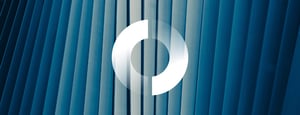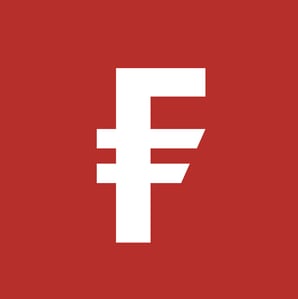Blackrock Greater Europe Investment Trust plc (LON:BRGE) has announced its latest portfolio update.
All information is at 30 April 2021 and unaudited.
To discover more about the BlackRock Greater Europe Investment Trust click here.
Performance at month end with net income reinvested
| One Month | Three Months | One Year | Three Years | Launch (20 Sep 04) | |
| Net asset value (undiluted) | 7.4% | 12.7% | 56.9% | 74.0% | 673.9% |
| Net asset value* (diluted) | 7.4% | 12.7% | 57.4% | 73.9% | 674.2% |
| Share price | 10.4% | 12.1% | 63.7% | 88.8% | 702.7% |
| FTSE World Europe ex UK | 4.5% | 9.4% | 34.7% | 27.8% | 336.8% |
* Diluted for treasury shares and subscription shares.
Sources: BlackRock and Datastream
At month end
| Net asset value (capital only): | 574.78p |
| Net asset value (including income): | 576.90p |
| Net asset value (capital only)1: | 574.78p |
| Net asset value (including income)1: | 576.90p |
| Share price: | 592.00p |
| Premium to NAV (including income): | 2.6% |
| Premium to NAV (including income)1: | 2.6% |
| Net gearing: | 3.7% |
| Net yield2: | 1.0% |
| Total assets (including income): | £506.9m |
| Ordinary shares in issue3: | 87,868,101 |
| Ongoing charges4: | 1.0% |
1 Diluted for treasury shares.
2 Based on an interim dividend of 1.75p per share and a final dividend of 4.40p per share for the year ended 31 August 2020.
3 Excluding 22,460,837 shares held in treasury.
4 Calculated as a percentage of average net assets and using expenses, excluding interest costs, after relief for taxation, for the year ended 31 August 2020.
| Sector Analysis | Total Assets (%) |
| Technology | 25.2 |
| Industrials | 25 |
| Health Care | 14.6 |
| Consumer Services | 12.2 |
| Consumer Goods | 10.1 |
| Financials | 5.1 |
| Basic Materials | 4.1 |
| Oil & Gas | 3.8 |
| Net Current Liabilities | -0.1 |
| —– | |
| 100 | |
| ===== | |
| Country Analysis | Total Assets (%) |
| Denmark | 18.8 |
| Switzerland | 18.1 |
| Netherlands | 16.2 |
| France | 14.5 |
| Sweden | 6.3 |
| Italy | 5.3 |
| Russia | 4.9 |
| Germany | 3.6 |
| United Kingdom | 3.3 |
| Poland | 2.1 |
| Finland | 2 |
| Ireland | 1.7 |
| Spain | 1.6 |
| Israel | 1.3 |
| Greece | 0.4 |
| Net Current Liabilities | -0.1 |
| —– | |
| 100 | |
| ===== |
| Top 10 holdings | Country | Fund% |
| ASML | Netherlands | 7.9 |
| Kering | France | 5.8 |
| Sika | Switzerland | 5.5 |
| DSV | Denmark | 5.2 |
| Lonza Group | Switzerland | 4.8 |
| Royal Unibrew | Denmark | 4.4 |
| Novo Nordisk | Denmark | 4.3 |
| Safran | France | 3.5 |
| Netcompany Group | Denmark | 3.4 |
| RELX | United Kingdom | 3.3 |
Commenting on the markets, Stefan Gries, representing the Investment Manager noted:
During the month, the Company’s NAV rose by 7.4% and the share price by 10.4%. For reference, the FTSE World Europe ex UK Index returned 4.5% during the period.
Europe ex UK markets were up in April. During the month we witnessed a partial reversal of the strong performance of value assets that we have seen during the first quarter of the year. Investors were questioning the durability of strength in some of the most cyclical parts of the market, which led to more economically sensitive sectors underperforming.
Consumer sectors and technology were the strongest performing sectors during the month, while energy, telecoms and utilities lagged the market. The Company outperformed its reference index, with both stock selection and sector allocation being positive. Outperformance was driven by the start of a strong Q1 earnings season for many of our portfolio companies.
In sector terms, the Company’s higher allocation to consumer services and technology was positive for returns, as was a lower allocation to utilities and telecoms. The Company’s underweight exposure to more defensive consumer goods detracted.
The Company’s positioning within the health care sector was the largest contributor to returns over the month. Contract drug manufacturer Lonza was amongst the top contributors after a period of consolidation in the share price. There was minimal material stock specific news, aside from the announcement of an expansion of its partnership with Moderna, who Lonza produce the COVID vaccine for, and an increase in its manufacturing capacity in Switzerland.
A position in dental supplier Straumann was also positive for performance, as the company raised full-year organic revenue growth guidance after reporting stronger than expected Q1 results. Management was also bullish on their opportunity in the China/ APAC region which remains an under-penetrated market. Danish ChemoMetec, which specializes in cell therapy, was amongst the top performers, while avoiding defensive pharmaceutical names Novartis and Roche also helped performance.
Beverage producer Royal Unibrew was the top performer over the month, raising the bottom end of guidance on the back of solid first quarter results. The company’s management team continue to prove themselves to be strong operators, generating 14% volume growth and margin expansion despite a difficult market environment with restaurants still closed. Looking forward to the healthy outlook for on-trade this year (people returning to bars), we are confident that the firm will continue to build upon its exceptional track record.
The Company benefited from a number of luxury positions reporting strong Q1 results. Gucci-owner Kering performed strongly with its key brands including Gucci, Bottega Veneta and Yves Saint Laurent all contributing to growth as revenues returned to pre-COVID levels. Meanwhile, Hermes’ Leather Goods & Saddlery and Ready-to-Wear divisions generated 34% and 51% growth respectively in the quarter, representing circa 70% of sales.
Our positioning within industrials was also successful during the month. Danish logistics company DSV announced it would buy Kuwait-based Agility’s logistics business in a $4.1bn deal, becoming the third largest global freight forwarder. DSV has an excellent track record of taking over and integrating businesses. Agility is roughly 25% of the size in volume of DSV and we would expect the deal to be mid-teens accretive post synergies. The logistics sector has seen increased M&A in recent years as the global players look for greater economies of scale given the strength in e-commerce.
French engine-maker Safran also contributed despite weak Q1 revenues. However, the company did not change their full year guidance and has seen a recent pick up in airline traffic.
Negative contributions came from a number of our semiconductor names such as BE Semiconductor and Infineon which saw weakness in April. Investors worry that we might be reaching the peak of the cycle for this sector, after a very strong recovery over the past year. We believe that BE Semi and Infineon have strong structural growth drivers and as such our medium-term conviction is unchanged.
Shares in Russian Lukoil fell over the month, in line with the sector, following strong performance in recent months. Not owning Nestlé and SAP also detracted as both companies’ Q1 results were better than expected by the market.
At the end of the period, the Company had a higher allocation than the reference index towards technology, consumer discretionary and industrials, and was neutral health care. The Company had an underweight allocation to financials, consumer staples, utilities, telecoms, real estate, basic materials and energy.
Outlook
We see recent market strength persisting over the coming months, aided by better virus testing capabilities, a successful vaccine rollout and a resilient global consumer, alongside continued accommodative fiscal and monetary policy. This market recovery is unlikely to be equal across all sectors: some companies still lack pricing power and are unable to reinstate dividends; others, however, such as travel exposed stocks, could see a meaningfully brighter 2021. Inflation may be on the horizon, but rates will likely remain low. A period of prolonged negative real rates and higher nominal growth is needed to allow governments globally to work their way out of the post pandemic debt overhang. We see this as being a supportive backdrop for equities overall.
20 May 2021
To discover more about the BlackRock Greater Europe Investment Trust click here.




































